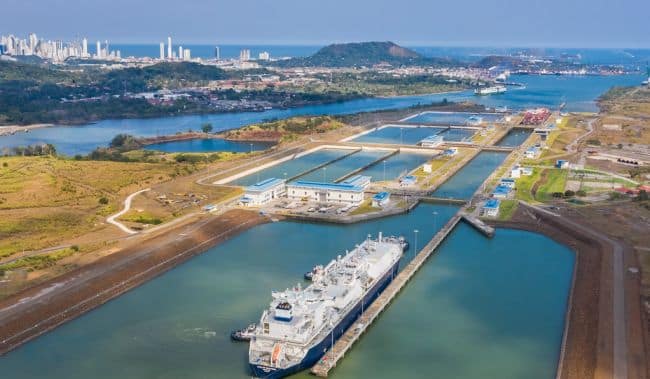
[ad_1]

The Panama Canal reaches this August 15, 107 years as a facilitator of world trade. From the transfer of the Canal to Panamanian hands, the waterway has enhanced the development of the country, operating as a profitable and sustainable organization in the face of changing conditions in today’s world.
Since its inauguration in 1914, the interoceanic highway has served as a shortcut for more than 1.1 million ship transits, reducing distance, time and costs in the transport of goods, while positively impacting the environment.
Our Green Route has contributed to reducing more than 830 million tons of carbon dioxide (CO 2 ), allowing ships to save fuel when crossing a shorter sea lane, and moving higher volumes of cargo from the start-up. of the expanded Canal, in June 2016.

Image Credits: micanaldepanama.com
Reaffirming its commitment to sustainability, the Canal recognizes the importance of reducing the carbon footprint of its own operations, which is why this year it announced its goal of being a carbon-neutral organization by 2030.
“The world is demanding that companies offer services and products that have a very low carbon footprint, so we are going to make investments to adapt to that reality, in line with our environmental tradition,” said the administrator of the Panama Canal, Ricaurte Vasquez Morales.
Water, institutions and long-term sustainability
A primary element of the Canal’s environmental strategy is to ensure the water from the water sources of its Hydrographic Basin, from which half of the country’s population is supplied, and is the main input for the operation of the road.
Through the sustainability programs developed between the Canal and the communities of its Basin, which encompass more than 2,000 families, 9,209 hectares have been established with different reforestation methods (conservation, agroforestry, silvopastoral, scrub enrichment) In addition, 2,000 hectares of forests are protected within private farms.
With its expansion, the interoceanic highway consolidated the role of Panama as a point of connectivity, promoting the convergence of 180 maritime routes linking 1,920 ports in 170 countries.
The legal framework of the Panama Canal has allowed the waterway to continue operating profitably for the benefit of the country, since its transfer at noon on December 31, 1999. Its management model guarantees its direct and indirect contributions to economic development from the country.
Despite the impact of Covid-19, and through its committed workforce, the Panama Canal continued with uninterrupted transit, adopting sanitary practices to preserve the well-being of its human team and the crews of its clients.
The operational results of the route in the last year show that the pandemic accelerated transformations that were already looming on the horizon of the business in which the Canal is developed, such as the consolidation of cargo in larger vessels, which implies less transits but greater draft. “As the Panama Canal does not have a monopoly on the routes it serves, this keeps us competitive and adds value to the service we offer to our clients,” said the Administrator.
Hence, the Canal advances an optimized water management system to meet the needs of half the country’s population and the long-term operation of the road, as well as investments that increase the productivity and efficiency of the road in front of to future prospects.
Reference: micanaldepanama.com
Panama Canal Celebrates 107 Years Connecting The World Trade appeared first on Marine Insight – The Maritime Industry Guide
[ad_2]
This article has been posted as is from Source